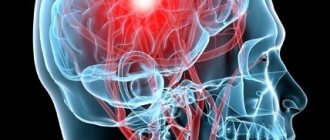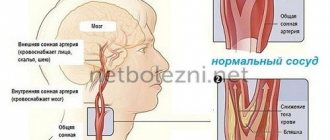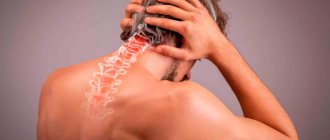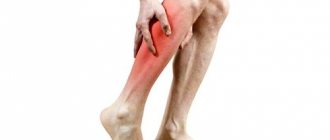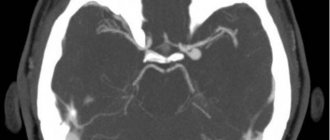Quite a significant number of people from time to time face such a problem as a feeling of pressure in the ears. According to some sources, at least 20-30% of the world's population has experienced this sensation at least once for no apparent reason. Anyone can experience this pain syndrome - the likelihood of its occurrence practically does not depend on age or gender, nor on social status or financial condition.
If we do not take into account the natural cases of the occurrence of this pressure - when flying on an airplane, diving to great depths, sudden rises to altitude, and so on, then the occurrence of this symptom is a sign of a person’s existing health problems. It is worth noting that the occurrence of pressure in the ear does not mean at all that the problem is associated with this organ - simply all the systems of our body are interconnected and the symptom of the disease can manifest itself in this way.
Isolated cases of feeling pressure in the ears may not be a sign of pathology, but they should not be completely ignored either. If you experience these sensations regularly, and are also accompanied by other alarming symptoms (head pain, nosebleeds, dizziness, nausea, weakness, etc.), then delaying a visit to the doctor is simply unacceptable. A combination of several symptoms or multiple repetitions of one - these cases undoubtedly require examination and an accurate diagnosis.
Symptoms
When visiting a doctor about pressure in the ears, some patients mention other symptoms accompanying this sensation:
- dizziness;
- ear congestion;
- associated pressure in the head;
- various noises of varying degrees of volume (ringing, clicking, hum, etc.);
- acoasmas (auditory non-speech hallucinations);
- nausea and headaches;
- increased sensitivity to sounds or light.
The presence of these additional symptoms gives the doctor reason to suspect a serious illness and suggest that the patient undergo a comprehensive examination. An otolaryngologist can also offer consultations with other specialists, since the alleged ailments may not be within his competence.
Noises in the ears and head: osteochondrosis is to blame
Some people experience a problem such as ringing or buzzing in the ears.
Why is there noise in my ears?
There are many reasons for this disease. Discomfort from tinnitus can occur without the presence of external stimuli. Annoying ringing is described in different ways. It can manifest itself in the form of a hum, buzzing, hissing, squeaking, squeaking, clicking, etc. Often, noise in the head and ears is accompanied by additional painful or unpleasant sensations. There is a severe headache that occurs in the neck and can spread to the shoulders, forearms and even the back of the head. Possible hearing loss. Nausea, accompanied by belching, dizziness, and loss of consciousness may occasionally occur. At times I suffer from anxiety, insomnia, and irritation. Memory is impaired. Pressure surges and pain in the heart area may occur. Sometimes vision decreases and dark circles appear under the eyes. With exacerbation, there may be disturbances in speech and motor function.
One of the triggers for the appearance of noise in the head is cervical osteochondrosis. With the development of this disease, the flow of blood to the brain tissues decreases, and hypoxia occurs. This is due to spinal pathology. It all starts with dystrophic changes in the intervertebral discs of the cervical spine. Under the influence of various reasons, the distance between the vertebrae is reduced. As a result, the vertebral arteries are pinched and compressed. The vessels carrying blood, rich in oxygen and other useful substances, narrow. The amount of blood flow decreases and venous congestion occurs. The slightest change in the intensity of metabolic processes and blood supply to the brain is fraught with disruption of the functioning of nerve cells. This results in phantom noise.
treatment of osteochondrosis
The noise goes away only when you begin to treat the main disease of the spine - osteochondrosis. But it is better not to treat this disease on your own, since the consequences may be far from positive. It is important to make sure that the cause of this phenomenon was a degenerative change in the structure of the cervical vertebrae, and not any specific ear disease. First you need to carry out a full range of diagnostic procedures, and only then select the necessary therapy. But you should know that only at an early stage the disease is completely curable. In later stages, the main goal is to reduce pain and prevent further development of cervical osteochondrosis, and help get rid of unpleasant symptoms.
Actions aimed at treating the disease should include:
- Taking various anti-inflammatory and painkillers;
- The use of creams, gels and other restorative ointments;
- Wearing therapeutic collars, daily cervical exercises, swimming pool exercises, physiotherapy, spinal massage;
- Application of medicinal plasters;
- UHF, mud procedures.
Doctors often prescribe chondroprotective and vitamin complexes to patients.
In the most extreme cases, surgical intervention is required, which is performed in the area of localization of inflammation. Most often, a hernia is operated on and the deformed bones of adjacent vertebrae are removed.
Prevention of osteochondrosis
Preventing cervical osteochondrosis is not difficult. It is recommended to lead a healthy and dynamic lifestyle, play sports or at least do morning exercises. You should refrain from fatty, starchy and sweet foods. To prevent the development of the disease, you should properly arrange your workplace and resting place.
Work needs to be alternated with breaks. With a sedentary lifestyle, it is necessary to stretch your muscles several times a day, and while working, find the correct position of your body and head.
Remember that it is very important to purchase a quality mattress and pillow for sleeping.
People with spinal diseases are advised to use special devices that have orthopedic properties. Author: K.M.N., Academician of the Russian Academy of Medical Sciences M.A. Bobyr
Causes
Pressure in the ears occurs due to a number of factors and ailments. These may include serious illnesses and completely harmless ones, for example, prolonged listening to music at high volumes in headphones. The most common causes of pressure in the ears are:
- otosclerosis (bone growth) and inflammation in the middle ear;
- pathologies of a neurological nature (cervical osteochondrosis, pinched vertebrae)
- atherosclerosis of blood vessels in the brain;
- high/low blood pressure of various etiologies (obesity, alcohol and tobacco abuse, depression, stress, heart problems, physical exercise, vascular disorders, etc.);
- injuries of the skull, head;
- tumor (acoustic neuroma) of the auditory nerve;
- otitis, sinusitis, rhinitis, earwax, aerootitis;
- everyday (natural) reasons - long telephone conversations, sleep disturbances, prolonged listening to music, overwork, sudden changes in atmospheric pressure, water getting into the ears, flying on an airplane, diving, etc.
The first signs of vascular complications and disasters
- hypertensive crisis;
- heart attack;
- transistor ischemic attack (TIA);
- stroke.
Symptoms of a hypertensive crisis:
- sudden onset within minutes or 1-3 hours;
- the blood pressure level is individually high (in one patient it is 240/120, in another – 130/90). This depends on the initial blood pressure level. If a patient has persistently low blood pressure, even a slight increase can cause a hypertensive crisis;
- presence of cardiac complaints (heart pain, palpitations);
- presence of complaints from the brain (headaches, dizziness, various visual impairments);
- the presence of complaints from the autonomic nervous system (chills, trembling, sweating, a feeling of a rush of blood to the head, a feeling of lack of air, etc.).
Symptoms of myocardial infarction:
- most common: pain and pressure in the chest,
Patients suffering from heart attacks may experience a variety of symptoms, such as:
- pain, feeling of fullness and/or squeezing in the chest;
- jaw pain, toothache, headache;
- shortness of breath;
- nausea, vomiting, general feeling of pressure in the pit of the stomach (upper center of the abdomen);
- sweating;
- heartburn and/or indigestion;
- pain in the arm (most often in the left, but can be in any arm);
- upper back pain;
- general painful sensation (vague feeling of malaise).
Symptoms of transistor ischemic as well as (TIA):
Typically, symptoms of transient ischemic attacks can last from a few minutes to an hour and include:
- feeling of weakness, numbness, tingling sensation in one half of the body;
- paralysis of arms or legs;
- visual disturbances (darkening of the eyes);
- loss of speech clarity;
These symptoms usually disappear completely within 24 hours, but may recur.
Symptoms of a stroke:
- sudden numbness or weakness of a certain part of the face, arm, leg (especially one-sided);
- sudden loss of vision in one or both eyes;
- sudden paralysis (usually one-sided);
- sudden dizziness or headache with nausea and vomiting;
- sudden difficulty speaking;
- difficulty swallowing;
- dizziness, loss of balance and coordination;
- loss of consciousness.
You can talk about an increased risk of stroke if:
- one or more of your blood relatives has had a stroke or myocardial infarction;
- you have been diagnosed with a tendency to microthrombosis;
- You suffer from arterial hypertension, angina pectoris, dyscirculatory encephalopathy;
- you have diabetes;
- you smoke or abuse alcohol;
- your lipid metabolism is disturbed (increased blood sugar and cholesterol levels), your body weight is significantly higher than normal;
- You have already had or currently have cerebrovascular accidents: neurocirculatory dystonia, transient ischemic attacks, hypertensive cerebral crisis.
How to prevent a stroke?
About half of strokes can be prevented. This is possible because many risk factors for stroke can be controlled. Here are these risk factors that can be prevented:
- High blood pressure (above 140/90 mmHg),
- Atrial fibrillation (a disease in which there is rapid chaotic contraction of the atria, resulting in blood clots in their cavities),
- Diabetes mellitus without adequate treatment,
- Increased cholesterol levels
- Smoking,
- Alcohol abuse
- Obesity,
- Disease of the carotid or coronary arteries.
To avoid vascular accidents, pay attention to your well-being in a timely manner. Get rid of risk factors (smoking, alcohol abuse, excess weight, physical inactivity). Monitor your blood pressure, blood sugar and cholesterol levels.
AND REMEMBER!
Regardless of the presence of complaints, once a year it is mandatory for everyone:
- undergo a fluorographic examination;
- measure blood pressure;
- visit an examination room (for women) and a urologist (for men);
- if you are over 40 years old, measure intraocular pressure, determine cholesterol and blood sugar levels, and undergo an ECG.
We wish you health and a long, interesting life!!!
Narab L.V.
Treatment
Obviously, treatment for ear pressure can only begin after a diagnosis has been made. Until the cause is identified, the otolaryngologist is unlikely to be able to prescribe medications or take any other action. In addition, if the cause of the disease is beyond his competence, then it will not be possible to do without the help of an appropriate specialist (therapist, surgeon, neurologist, etc.).
The reception is conducted by specialists
Kirillov Evgeniy Sergeevich
Audiologist
Cost of services
Initial consultation with an audiologist
1200₽
Repeated consultation with an audiologist
1000₽
Drills temples
This sensation of pain, popularly described as “drilling in the temples,” occurs with low blood pressure and accompanies a tension headache or an attack of cluster pain. Tension pain is most common among people with mental work (desk and chair workers). It helps to perform a manual massage of the head or shoulder girdle, rest for several minutes in a horizontal position, get a good night's sleep and take breaks from work.
With cluster pain, everything is much more complicated. Such pain is quite rare (in five out of six cases in men), the causes of pain are still unclear. Symptoms of such pain are pain in one side of the head.
Causes of muscle spasms
Why is this happening? In fact, there can be many reasons. Most often, constant nervous strain, hypothermia or vitamin deficiency play a role. Only high-quality diagnostics can identify the specific cause. Often this trouble is caused by concomitant diseases of the musculoskeletal system, for example, osteochondrosis, which develops for the following reasons:
- Genetic predisposition.
- The presence of obesity of various degrees.
- Low activity.
- Poor metabolism.
- Sedentary work.
As mentioned above, muscle spasms in the head and neck are dangerous to health. First of all, the danger is manifested by the fact that regular spasms negatively affect blood circulation, that is, the required amount of oxygen does not reach the brain. This can lead to serious consequences, such as hypoxia. It is for this reason that experts do not recommend self-medication.
If you constantly ignore the manifestations of osteochondrosis, this is fraught with the development of additional pathological processes. Often people completely lose their ability to work; in more advanced cases, this can lead to disability. Before starting treatment, the patient is required to undergo a series of diagnostic procedures. If you begin to restore your health in time and take measures to eliminate spasms, you can return to your normal lifestyle.
Diagnosis and treatment of headaches and neck pain
If you have such a diagnosis, and you are forced to regularly experience headaches and other unpleasant symptoms, immediately visit a medical doctor.
institution. Treatment of the musculoskeletal system is carried out in the modern TitAn clinic. The medical center has innovative equipment that will help determine the cause of spasms. Specialists with many years of experience will prescribe you effective treatment, and you will forget about your problem forever.
The first stage is a qualitative diagnosis, which includes the following:
- Palpation diagnostics (author’s method of the head physician of this medical center).
- Computed tomography, magnetic resonance imaging.
- Clinical studies that will help to correctly diagnose and develop further treatment tactics.
The above diagnostic methods in combination lead to excellent results and the manifestation of a complete clinical picture. It is possible not only to determine the cause of spasms, but also to characterize in detail the pathological process and its features. With the help of correctly prescribed treatment, the results of therapy will make themselves felt in the near future.
The main goal in the treatment of pathologies of the musculoskeletal system is to normalize blood circulation in the vessels, which is the cause of many degenerative processes. The medical clinic accepts patients with any pathologies of the spine, including those with neck and head spasms. Doctors treat even the most advanced stages of the disease. Even if other clinics have refused you therapy, feel free to contact us! Highly qualified specialists will quickly find out the cause of your discomfort and prescribe effective treatment!
